admin
Staff member
2023 Kawasaki ZR650RS Blends Retro Style And Modern Features
Contents
As other Japanese motorcycle brands have done, Kawasaki has embraced the retro style with the 2023 Kawasaki Z650RS and combines modern features with classic design. The Kawasaki Z650RS is a modern interpretation of the classic Z650. This new version features a liquid-cooled 649cc parallel-twin engine that produces 67 horsepower and 47 lb-ft of torque. It also has a six-speed transmission and a slipper clutch. To complete the look, it has a round headlight, a teardrop-shaped fuel tank, and a single-seat tail section.
The look is retro but Kawasaki motorcycles are known for including modern features and the 2023 Z650RS is no different as it includes LED lighting, Assist and Slipper Clutch, ABS and adjustable suspension.
Overall, the 2023 Kawasaki Z650RS is an excellent motorcycle that combines classic design with modern features. It offers great performance, rider comfort, and safety features. If you’re looking for a sporty bike with a retro vibe in Kawasaki’s 2023 motorcycle catalog, the Z650RS is definitely worth considering.
The 2023 Kawasaki Z650RS starts at $9,099 USD/$10,299 CAD
On this page: we’ve curated specs, features, news, photos/videos, etc. so you can read up on the new 2023 Kawasaki Z650RS in one place.
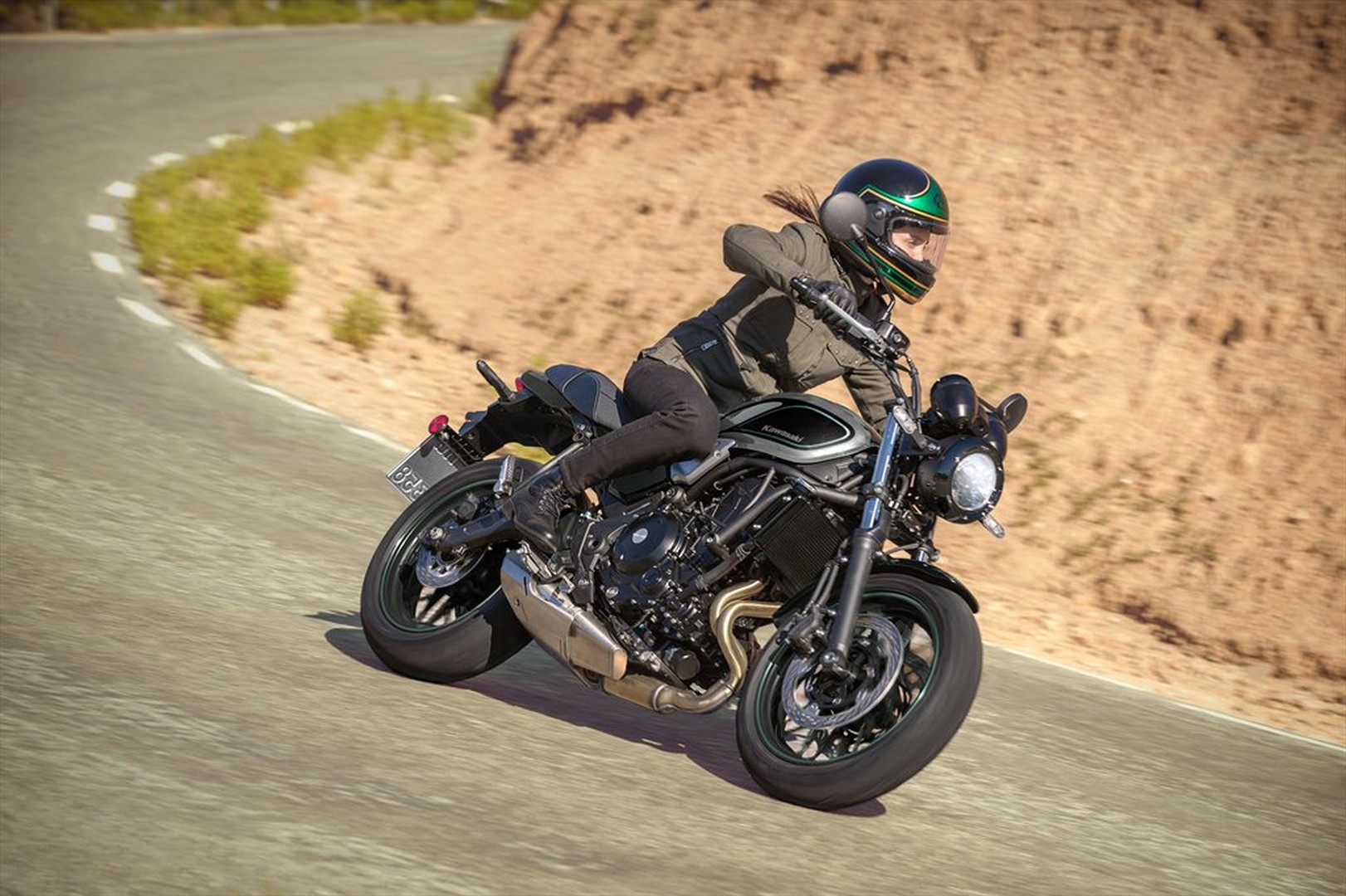

Model Overview
General Info
- Price: $9,099 USD/$10,299 CAD
- Key Features:
- Retro Styling
- Slipper Clutch
- ABS
- LED headlight
Main Specs
- Engine: 649 cc 4-stroke, 2-cylinder, DOHC, liquid-cooled
- Power: 67 horsepower
- Torque: 48.5 lb-ft
- Weight: 412 lbs (186 kgs)
- Seat Height: 31.5 inches (800 mm)
Competitors
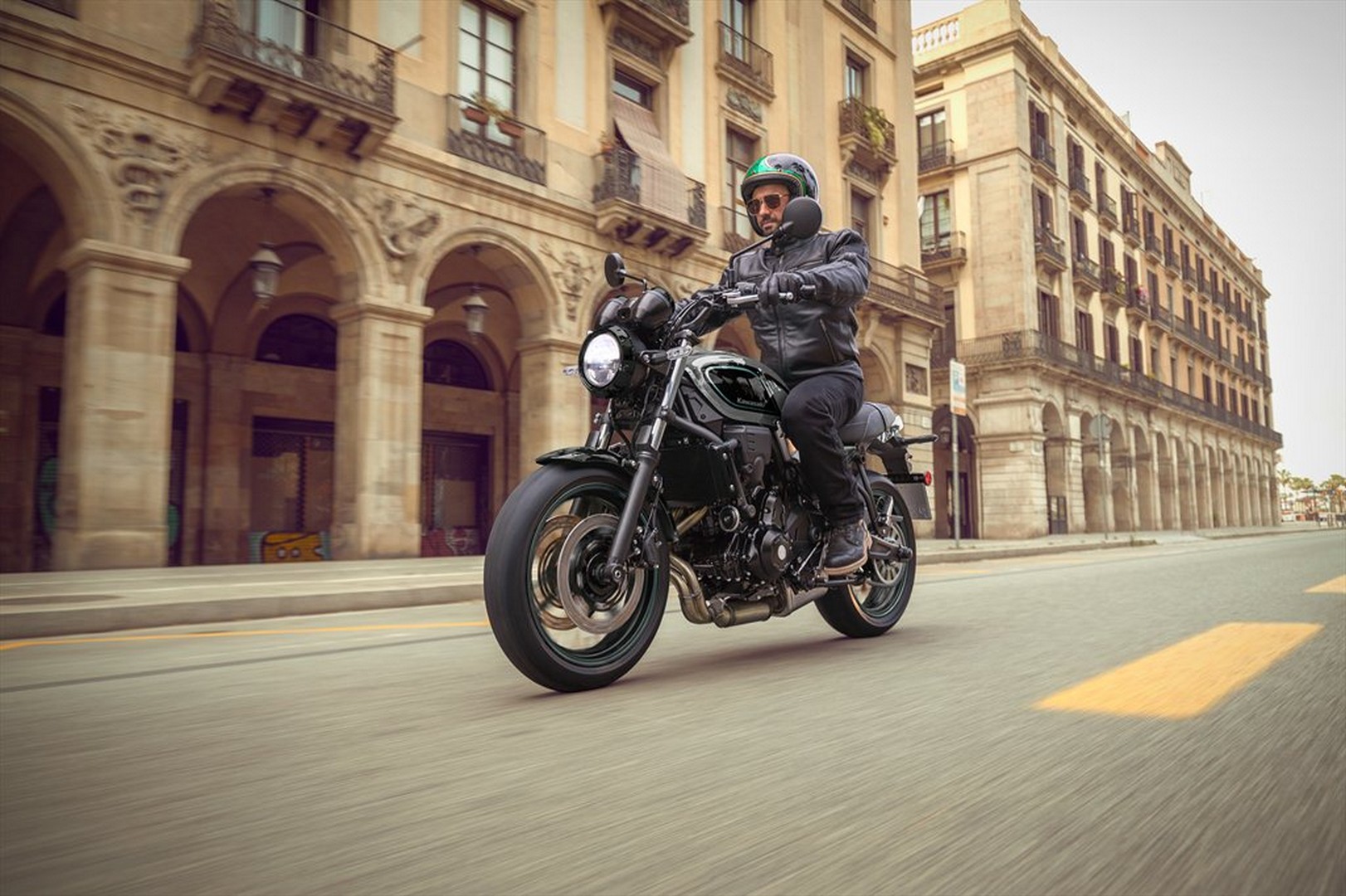

2023 Kawasaki Z650RS Specifications
ENGINE | |
| Engine | 649cc, 4-stroke, 2-cylinder, DOHC, liquid-cooled |
| Power | 67 hp |
| Bore x Stroke | 83.0 x 60.0mm |
| Compression Ratio | 10.8:1 |
| Fuel System | DFI® with Keihin 36mm throttle bodies |
| Starter | Electric |
| Maximum Torque | 48.5 lb-ft @ 6,500 rpm |
DRIVETRAIN | |
| Clutch | |
| Transmission | 6-speed, Return Shift |
| Final Drive | Sealed chain |
CHASSIS | |
| Suspension Front | Telescopic fork/4.9 in |
| Suspension Rear | Horizontal back-link with adjustable spring preload/5.1 in |
| Brakes Front | Dual 300mm petal-style discs with two-piston calipers, ABS |
| Brakes Rear | Single 220mm petal-style disc, ABS |
| Tires Front | 120/70 ZR17 |
| Tires Rear | 160/60 ZR17 |
| Fuel Tank Capacity | 3.2 gal |
| Color | Metallic Moondust Gray/Ebony |
ELECTRICAL | |
| Ignition | TCBI with electronic advance |
| Spark Plugs | |
| Headlight | LED |
| Tail Light | LED |
DIMENSIONS | |
| Overall Length | 81.3 in |
| Overall Width | 31.5 in. |
| Overall Height | 43.9 in |
| Wheelbase | 55.3 in |
| Ground Clearance | 4.9 in |
| Seat Height | 31.5 in |
| Curb Weight | 412.3 lb* |
WARRANTY | |
| Warranty | 12 Month Limited Warranty |
| Kawasaki Protection Plus | 12, 24, 26 or 48 months |
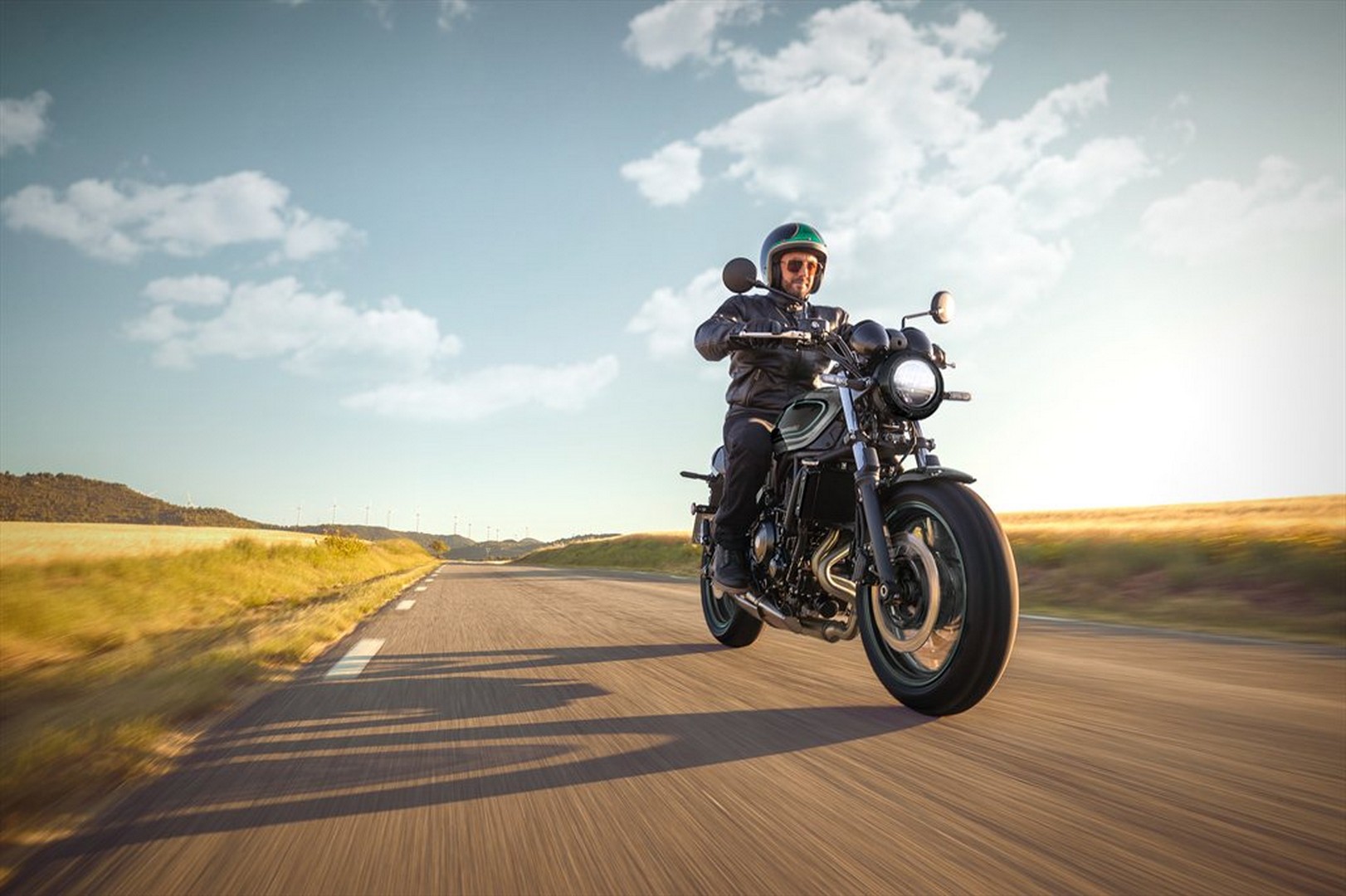

2023 Kawasaki Z650RS Features
Assist & Slipper Clutch
Based on feedback from racing activities, the Assist & Slipper Clutch uses two types of cams (an assist cam and a slipper cam) to either drive the clutch hub and operating plate together or apart.Under normal operation, the assist cam functions as a self-servo mechanism, pulling the clutch hub and operating plate together to compress the clutch plates. This allows the total clutch spring load to be reduced, resulting in a lighter clutch lever feel when operating the clutch.
When excessive engine braking occurs – as a result of quick downshifts (or an accidental downshift) – the slipper cam comes into play, forcing the clutch hub and operating plate apart. This relieves pressure on the clutch plates to reduce back-torque and helps prevent the rear tire from hopping and skidding. This race-style function is particularly useful when sport or track riding.
Dual Throttle Valves
Late-model sport bikes often use large-bore throttle bodies to generate high levels of power. However, with large diameter throttles, when a rider suddenly opens the throttle, the unrestricted torque response can be strong. Dual throttle valve technology was designed to tame engine response while contributing to performance.On models with dual throttle valves, there are two throttle valves per cylinder: in addition to the main valves, which are physically linked to the throttle grip and controlled by the rider, a second set of valves, opened and closed by the ECU, precisely regulates intake airflow to ensure a natural, linear response. With the air passing through the throttle bodies becoming smoother, combustion efficiency is improved and power is increased.
Economical Riding Indicator
Using high-precision electronic control for engine management, Kawasaki models can achieve a high level of fuel efficiency. However, fuel consumption is greatly affected by throttle use, gear selection, and other elements under the rider’s control. The Economical Riding Indicator is a function that indicates when current riding conditions are consuming a low amount of fuel. The system continuously monitors fuel consumption, regardless of vehicle speed, engine speed, throttle position and other riding conditions. When fuel consumption is low for a given speed (i.e. fuel efficiency is high), an “ECO” mark appears on the instrument panel’s LCD screen. By riding so that the “ECO” mark remains on, fuel consumption can be reduced.While effective vehicle speed and engine speed may vary by model, paying attention to conditions that cause the “ECO” mark to appear can help riders improve their fuel efficiency – a handy way to increase cruising range. Further, keeping fuel consumption low also helps minimize negative impact on the environment.
ABS (Anti-lock Brake System)
Kawasaki ABS systems use front and rear wheel sensors to constantly monitor wheel speed. Should information from either of the sensors indicate that wheel lock has occurred, the ABS ECU directs the pump in the ABS unit to modulate brake fluid pressure (releasing and reapplying pressure so that traction can be regained) until normal operation resumes. ABS offers rider reassurance that contributes to greater riding enjoyment.Horizontal Back-link Rear Suspension
Compared to the Kawasaki traditional Uni-Trak® rear suspension, which mounts the shock unit vertically, with Horizontal Back-link Rear Suspension, the shock unit is almost horizontal. The original Kawasaki suspension arrangement locates the shock unit very close to the bike’s center of gravity, greatly contributing to mass centralization. And because there is no linkage or shock unit protruding beneath the swingarm, this frees up space for a larger exhaust pre-chamber (an exhaust expansion chamber situated just upstream of the silencer). With a larger pre-chamber, silencer volume can be reduced, and heavy exhaust components can be concentrated closer to the center of the bike, further contributing to mass centralization. The result is greatly improved handling.2023 Kawasaki Z650RS Photos


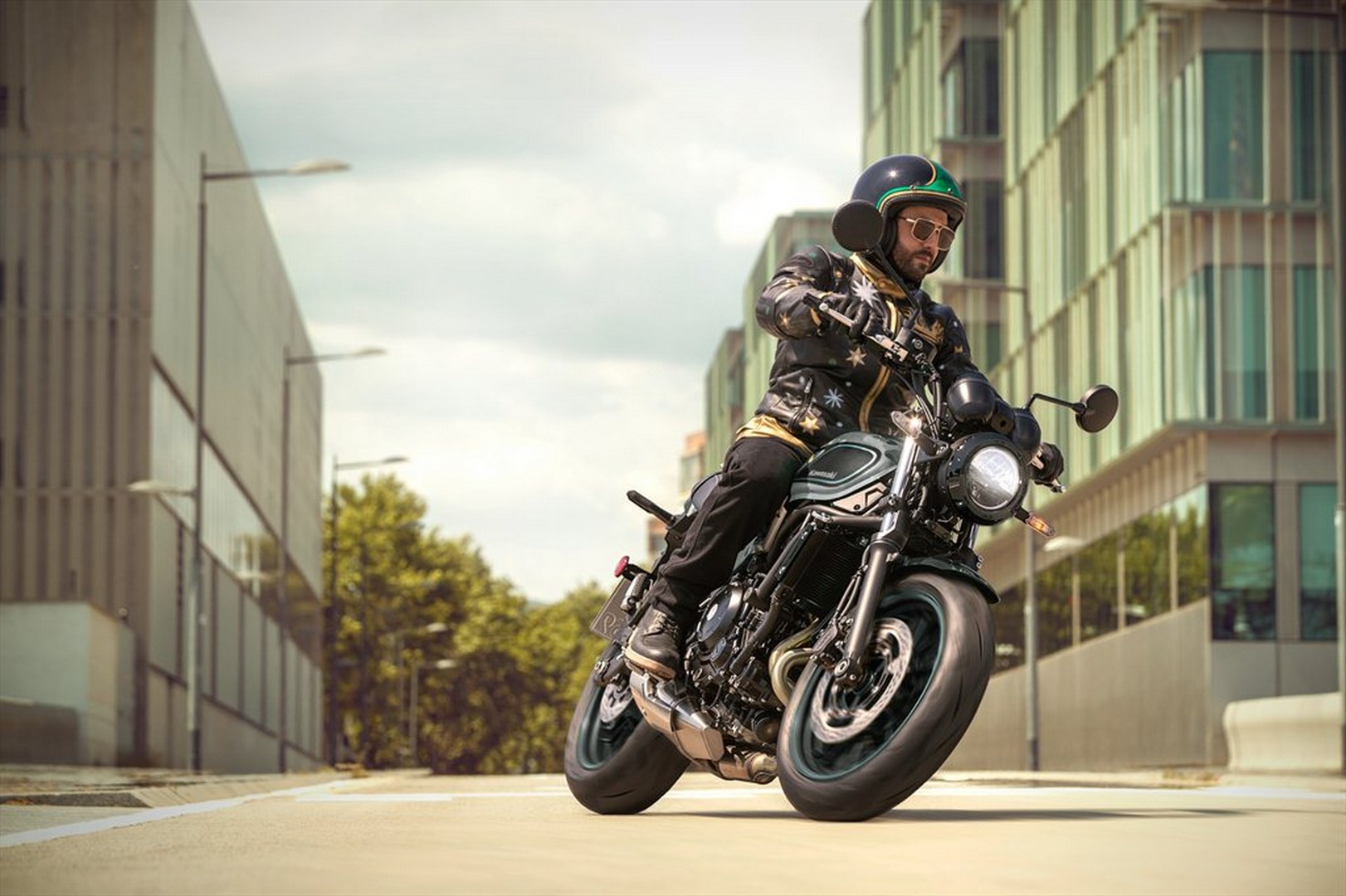

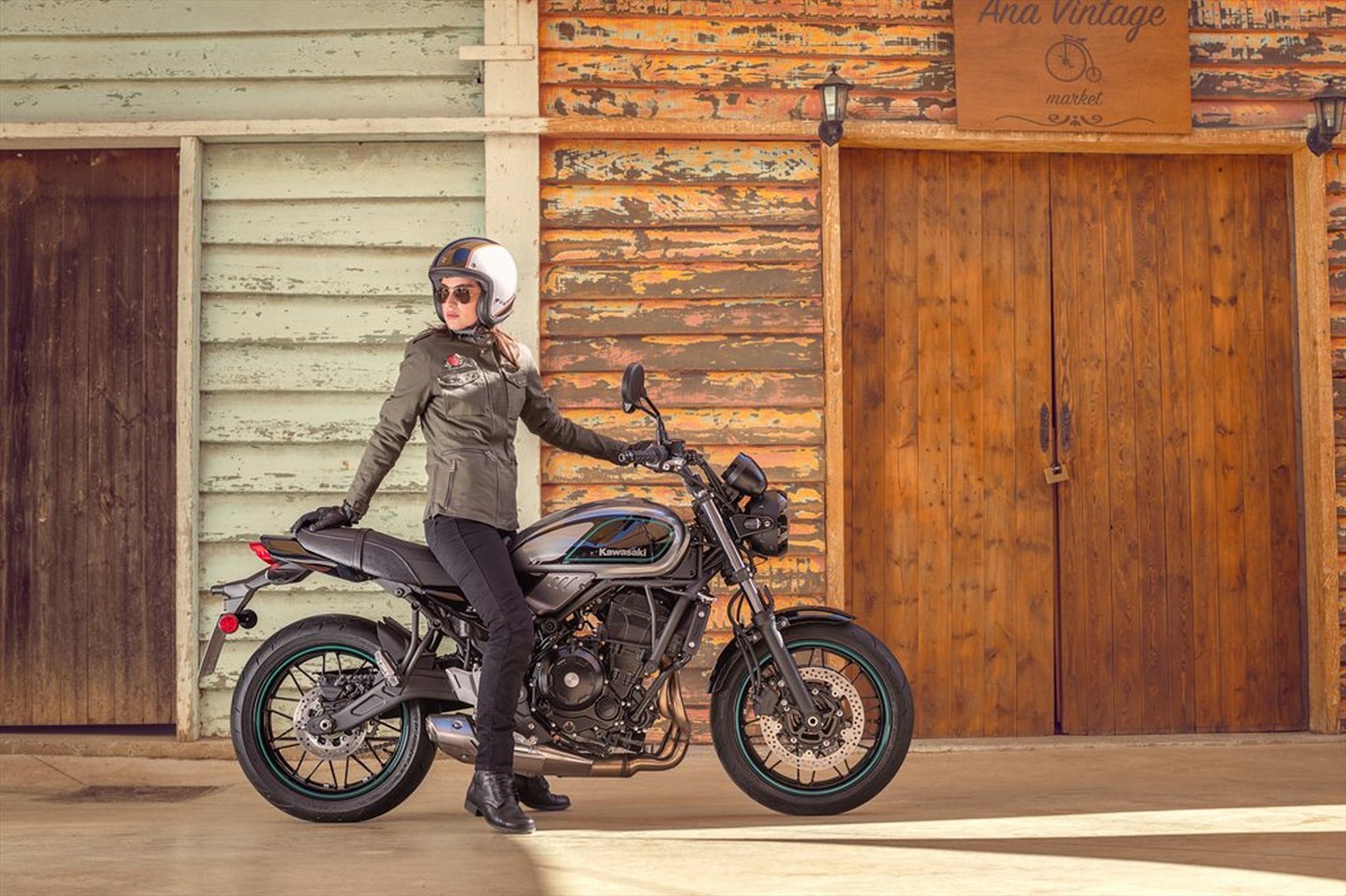
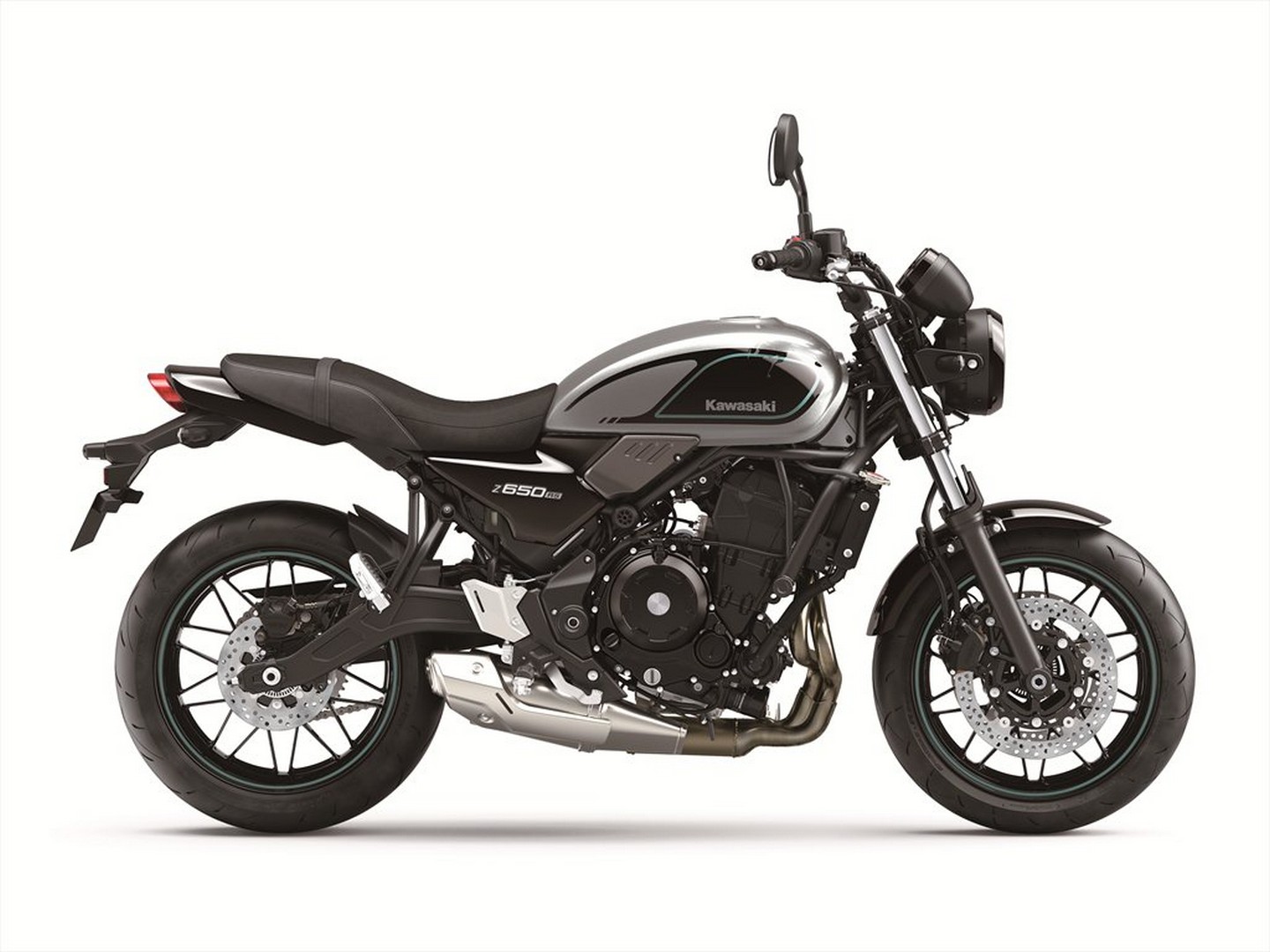
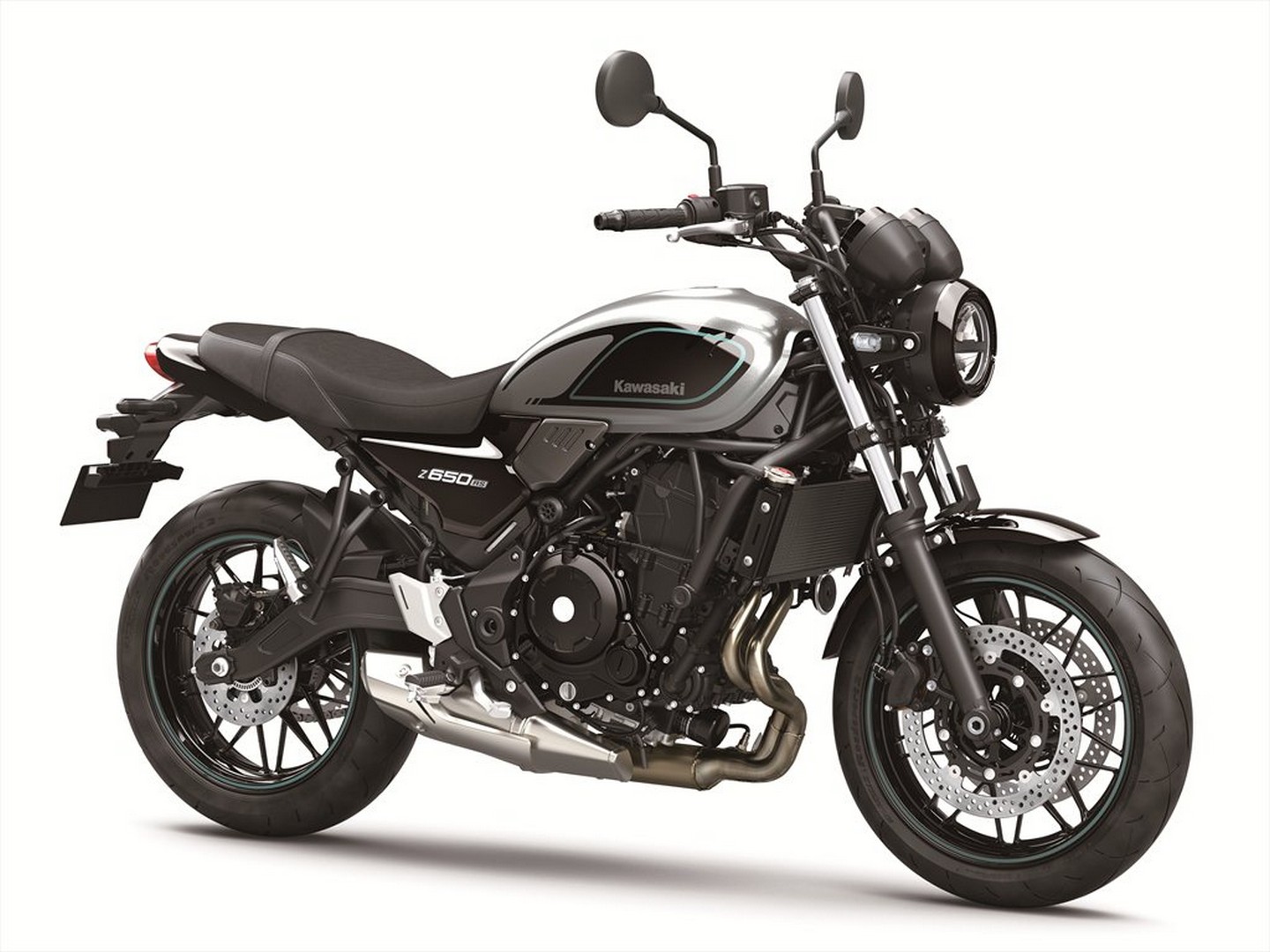
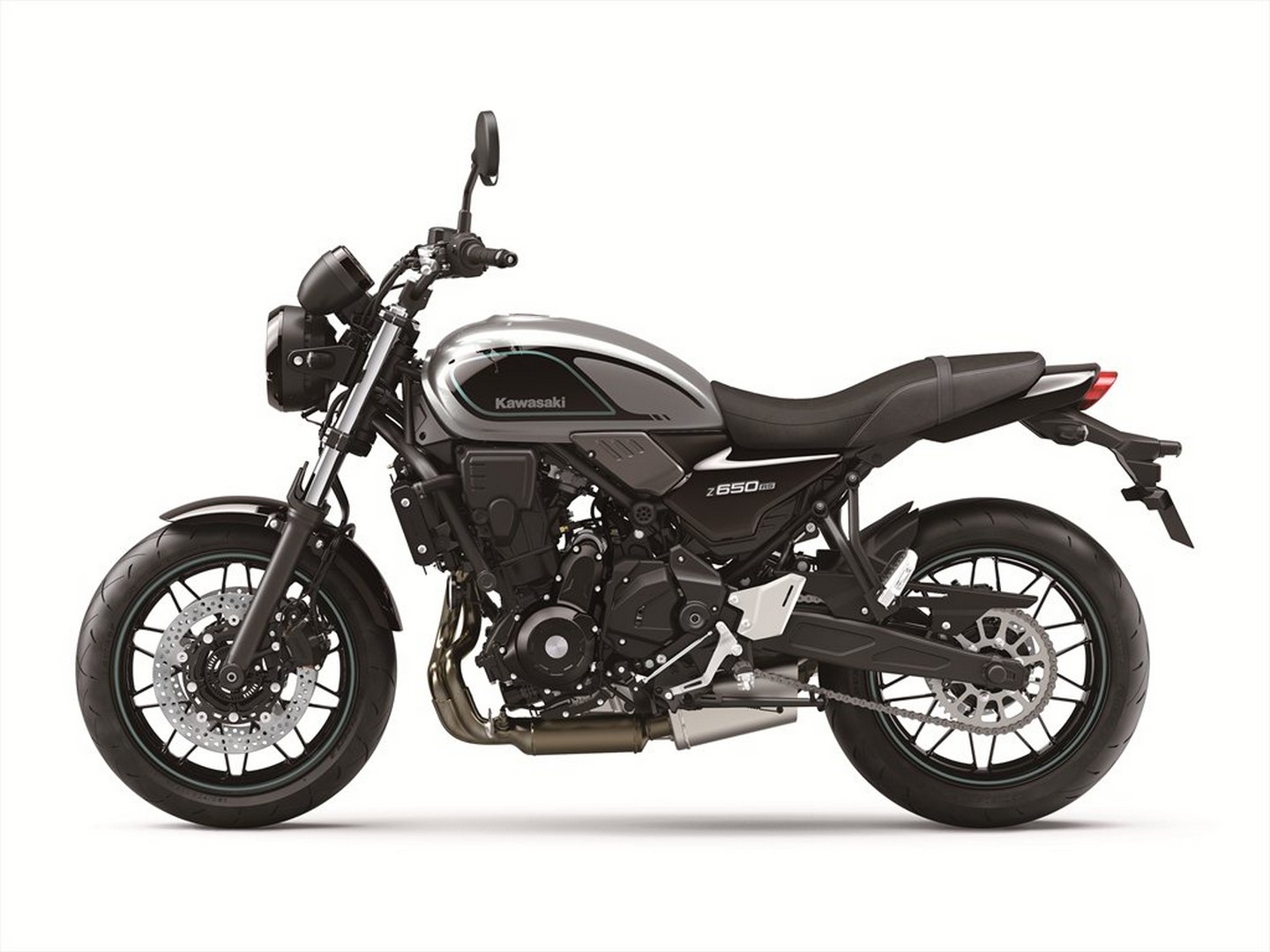
2023 Kawasaki Z650RS Videos
2023 Kawasaki Z650RS review by Peter Lowe One:
2023 Kawasaki Z650RS Review by HotCars:
Links
Kawasaki Official Websites
Social Media Links
The post 2023 Kawasaki Z650RS [Specs, Features, Photos] appeared first on webBikeWorld.
Continue reading...


